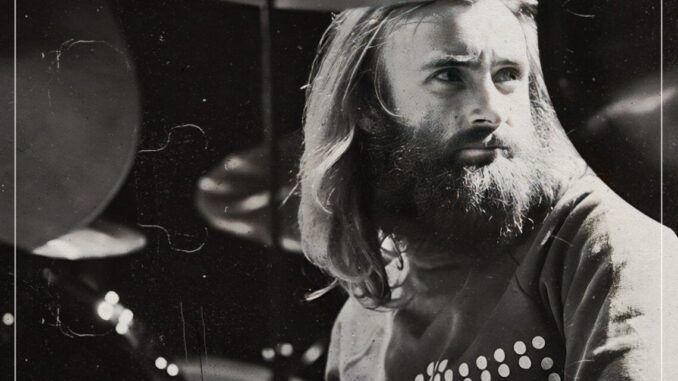
“Unmatched Power: The Song Phil Collins Believed Had the Best Drum Sound Ever”:

Unmatched Power: The Song Phil Collins Believed Had the Best Drum Sound Ever
Few musicians have left as significant a mark on modern music as Phil Collins. Known for his role as drummer and frontman of Genesis and his massively successful solo career, Collins became synonymous with powerful drum work and emotional storytelling. Of all his recordings, one song stands above the rest—not just for fans, but for Collins himself. That song is “In the Air Tonight”, which he once described as having the greatest drum sound in the world.
Released in 1981 as his debut solo single, “In the Air Tonight” became an instant classic. Its haunting atmosphere, sparse instrumentation, and explosive drum break captured the attention of listeners around the globe. While the song’s eerie tone and cryptic lyrics certainly contributed to its appeal, it was the thunderous drum fill that entered halfway through the track that truly changed the game. According to Collins, that moment—and the sound behind it—was pure magic.
An Accidental Breakthrough
The iconic drum sound that defines “In the Air Tonight” didn’t come from a grand plan. In fact, it was born almost by accident. While working on Peter Gabriel’s third solo album in 1979, Collins and producer Hugh Padgham were experimenting with recording techniques at The Townhouse Studio in London. During a session, Padgham happened to open the talkback mic, a usually dull-sounding microphone used for communication between control room and booth. But what they heard was anything but ordinary.
The drum sound that came through was massive—crisp, punchy, and drenched in reverb, but with an abrupt cutoff that gave it a distinct, gated feel. This was the birth of the “gated reverb” effect, a production technique that would define an entire era of music.
Recognizing its potential, Collins and Padgham refined the sound and later used it prominently in “In the Air Tonight.” The technique involved using heavy compression and a noise gate on the drums, creating a booming yet tightly controlled sound. “It was one of those beautiful accidents in the studio that turned into a revolution,” Padgham later recalled.
Setting the Mood
Part of what makes the drum fill in “In the Air Tonight” so effective is the way Collins structures the song. For over two minutes, the track is minimal—dominated by a moody electric piano, synth pads, and Collins’ emotionally charged vocals. The tension builds steadily, with no drums in sight. Then, just as the listener is lulled into the misty ambiance, the drums explode into the mix.
That iconic fill—“du-duh, du-duh, duh-duh-duh-duh!”—hits like a freight train. It’s not just the rhythm; it’s the sheer sonic power of the drums that leaves a lasting impact. Collins himself described the moment as “like punching the listener in the face after a long, slow build-up.” It’s a textbook example of musical tension and release, and it works masterfully.
A Game-Changer in Music Production
The gated reverb effect introduced by Collins and Padgham didn’t just elevate one song—it changed the way drums were recorded and perceived in popular music. Throughout the 1980s, the technique became a go-to for producers and artists looking to give their records a bold, cinematic sound.
Artists like Prince, Bruce Springsteen, Duran Duran, and even David Bowie embraced the approach, and it became a staple of rock and pop production. But despite its widespread use, few songs harnessed the effect with the same emotional power as “In the Air Tonight.” That’s why Collins considered it the pinnacle of drum sound—a perfect union of technology, timing, and musicality.
The Myth and Legacy
Beyond its technical brilliance, “In the Air Tonight” gained mythical status thanks in part to the urban legend that it was inspired by Collins witnessing a drowning incident. Though Collins has repeatedly denied this rumor, the song’s haunting tone and ambiguous lyrics have only fueled speculation. What is certain, however, is the lasting impact of the track and its signature drum moment.
The song has been used in countless films, TV shows, and commercials—most memorably in Miami Vice and the famous 2007 Cadbury advertisement featuring a drumming gorilla. These pop culture moments introduced the song to new generations and solidified its place in music history.
Even today, more than four decades after its release, “In the Air Tonight” remains one of the most recognized and revered tracks in rock history. Drummers still study it. Producers still reference it. Fans still air-drum the fill every time it hits.
Phil Collins’ Reflection
Over the years, Collins has been asked about his proudest musical moments. Despite an extensive catalog of hits, he always returns to “In the Air Tonight.” In interviews, he’s referred to the song’s drum sound as “incredible,” a word that carries even more weight coming from one of the most accomplished drummers of the modern era.
“I didn’t know it would become what it became,” Collins once said. “But when those drums come in, there’s just something primal about it. It’s the sound. It’s the moment. Everything just worked.”
A Sound That Echoes Forever
In recent years, Phil Collins has stepped back from performing due to health issues. Yet his legacy endures—not just in the albums he’s made or the concerts he’s performed, but in the sounds he helped create. The gated reverb drum effect remains one of the most important innovations in music production, and its birthplace will always be “In the Air Tonight.”
For Collins, it wasn’t just a song. It was a moment of creative clarity, a perfect storm of emotion, innovation, and execution. That’s why he deemed it the greatest drum sound in the world. And for millions of fans, that’s exactly what it
Leave a Reply